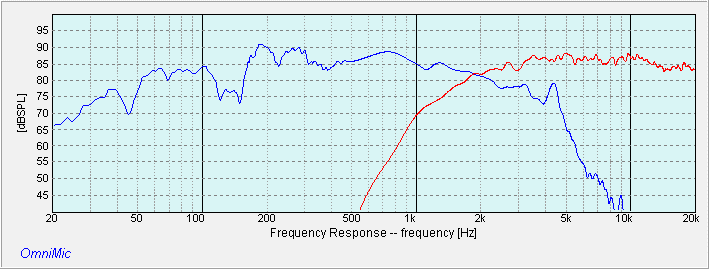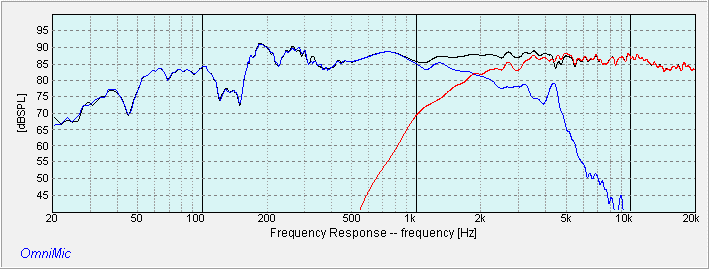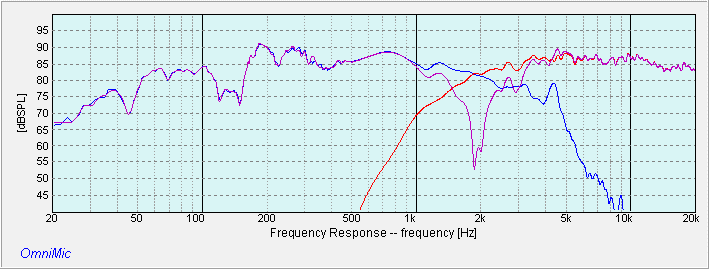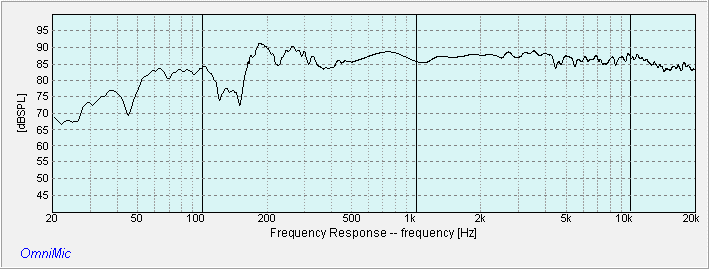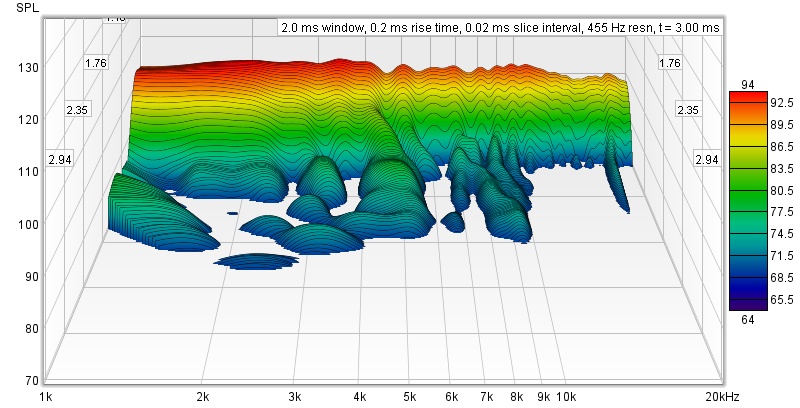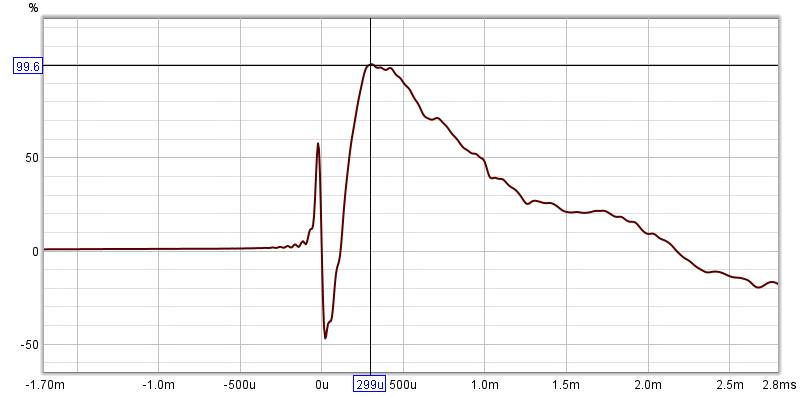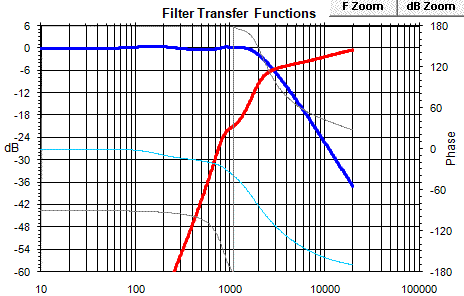|
Now that I have a “feel” of the Dayton GF180-4 woofer with an active system, I’m ready to work on the passive crossover. In this Flycatcher, I decided to retain the Peerless BC25TG15-04 tweeter to keep the cost low. But more than that, I’m able to do things with this tweeter that other tweeters can’t. You’ll understand why along the way.
The Blue plot is the GF180-4 with a Low Pass Filter. The Red plot is the BC25TG15-04 with a High Pass. Acoustically, they are crossing at 1.9kHz.
The Black plot is the summation of the two drivers. No cancellations are observed in this region, indicating proper summing of the woofer and the tweeter.
The Violet plot is the null response. This is a much deeper notch compared to the active version. Meaning the Flycatcher driver’s alignment is superior. See what can be achieved with a passive crossover.
The Black plot is the Flycatcher final frequency response. For this plot, the tweeter is wired in-phase. The Flycatcher response is actually flatter than the active one.
The Waterfall plot between the active and passive versions are almost similar.
Likewise for the Toneburst plot. There seems to be slightly more artifacts but it’s academic.
Again, there’s not much difference in the Spectrogram between the active and passive versions.
Now we are seeing some real improvement. With this passive crossover, the woofer peak is at 299microsec. This is much faster than in the active version which registered a “slow” 500microsec.
The THD is still high at 3.63%. What has changed is the 2nd and 3rd harmonics are now at 1.5%.
To the uninitiated, crossing at 1.9kHz for the BC25TG15 seems too low for the tweeter. This is a wrong assumption. There is a huge difference between an acoustic crossover and an electrical one. To see the interactions between the power amplifier and the crossover, one should look at the transfer function. The Red plot in the Transfer Function above is the tweeter’s filter. You can see from the plot how I shaped her acoustic response. When I’m finished, what you see is the tweeter crossing the woofer acoustically at 1.9kHz but in fact they are crossing at 3kHz electrically. At this frequency, the tweeter is not stressed.
The Flycatcher is one of the best budget 2-ways I have. Her tonal balance is excellent. The bass is loud enough, midrange clarity is there and the treble contains no harshness. I would recommend the Flycatcher for general purpose use. She’s definitely not for those who are looking for something spectacular. For that, you’ll need a Seas U18RNX which cost 5x more. But that doesn’t mean there’s no place for the Flycatcher. Actually, compared to what is in the market, she’ll put a lot of them to shame. Unless otherwise stated, all measurements were made in Full Space. Mic at 36 ins, tweeter axis. Impulse Window=5ms. No smoothing applied. |

November 24, 2023HIFI DRIVERS, Projects
